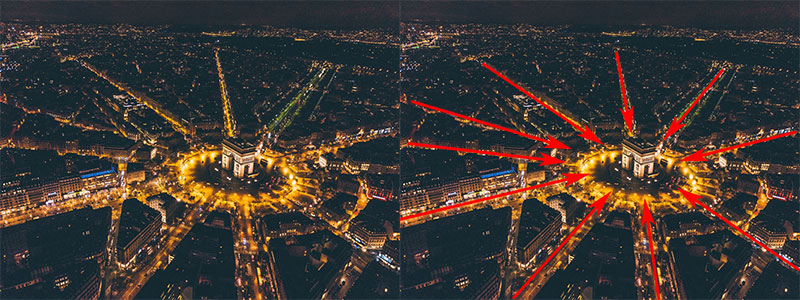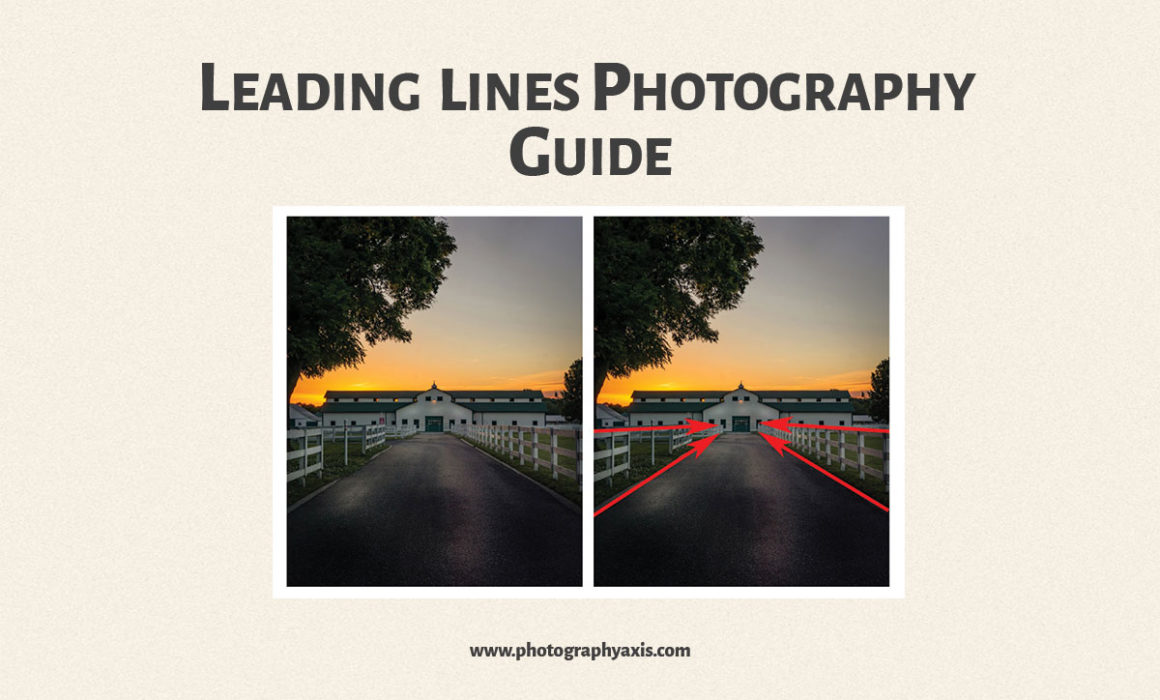Leading Lines Photography Composition Guide
Today, we will learn a new image composition technique. In this article, I will explain the Leading lines photography composition technique in detail. Unlike, some of the other famous methods, you cannot make use of any grids here, which makes it exciting and unique.
Leading Lines Photography Definition
So, let us start with the definition of leading lines photography. It is a photography composition technique where the lines in the scene are used as the guide to draw the viewer’s attention towards the subject. Thus, making it more pleasing for the eye.
The leading lines are formed as a result of the shape of the objects and structures in the frame. These lines need not be straight; it can be in any shape like curves or diagonals. Sometimes, there may be multiple lines converging or intersecting each other.
READ: Rule of Thirds Photography Composition Technique
How to Use Leading Lines in Photography?
There are many ways to use the leading lines in a scene. I will tell you some of these instances.
1. Leading towards the Subject

The easiest way to use leading lines photography is to use these lines towards a single subject. The lines will start from the foreground section and end at the subject.
In this photo, the multiple roads lit by different street lamps form the different leading lines. All these lines point towards the big arch-like structure. Thus, it makes the arch as the centre of attraction in the frame.
If you are trying for the first time, then I recommend to keep it simple like this.
2. Connecting Multiple Subjects

Sometimes there will be more than one subject in the frame. So, you need to compose it carefully in such a way that the leading lines connect these subjects to create a mind-blowing composition.
Here, the pathway act as the leading lines connecting the women in the yellow outfit, followed by the person in green dress and pointing towards a bunch of people in the front.
I recommend to try out multiple ways to compose the same scene and compare these frames and finalize the best one amongst them. You will learn it better this way.
Paths Vs Leading Lines

What if the lines don’t lead to any subject? In that case, you cannot use the leading lines technique. Such lines are called Paths (image above).
Here, you only have a path which doesn’t meet anything. The above picture is an excellent example of a path. Here, the road doesn’t lead to any subjects. It hits a dead end. Most of the newbies will get confused between these two.
How to Find Leading Lines?
If you are a beginner in photography, then you may find it difficult to see the different leading line opportunities in a frame to use this composition. So, I will make things easy for you by sharing some of the things that you can use. These are some of the best examples of leading lines photography.
1. Road

Here, the leading lines formed by the road leads the viewer’s eye towards the building at the end.
Thus, it directs the viewer’s eye towards the subject without any distraction. Most of the landscape images, which has a road in the frame, will be using this composition technique.
2. Rail

If you have a rail in your frame, then use it as the guideline, either pointing towards the subject or taking the subject along with it.
Here, in the above picture, the man trying to balance on one of the rails becomes the main subject. The track leads towards the mountains at the far end.
3. Pillars

Here, the series of pillars on the left and the right creates the leading lines, creating a connection between the foreground and background of the image. It points towards the door at the other end.
So, next time when you are inside any building or old monument structures with pillars, give it a try.
4. Series of Lamps
Series of lamps can act as the guideline, both in the day as well as night. The scene will be more attractive at night with the lamp glowing. But, make sure that the lines point towards the subject.
5. Bridge

The viewer’s eye first sees the person standing on the hanging bridge, followed by the other end of the bridge, where the lamp is glowing. Here, the leading lines are not straight, but in a curved manner.
The leading lines photography composition technique has made the composition easy here. The image has become more interesting with the person standing in the frame. Otherwise, the frame will not look this beautiful.
6. River
As I mentioned before, the lines need not be straight. It can be curved also. If you have a river or lake in the scene then you can use it to point towards the subject of interest. The subject can be a mountain, building or any other items.
You have to capture such an image at an elevation. Only then the river will act as leading lines. It can be from the top of the building, mountain or using a drone. Only then you will be able to view the guiding lines to try this composition.
7. Patterns in Buildings and Structures
If you are doing interior photography of buildings, structures or monuments, then you can use these patterns inside to create the leading lines effect. Make sure that the patterns point to a subject.
8. Light Trails
Have you ever tried shooting light trails on the road at night, which are formed by moving vehicles? If not, then you must try it next time. It is long exposure photography using the Bulb mode in your camera.
The best way to compose such an image is to use the Leading lines photography technique. Here, you don’t have any lines initially. These lines are created using the long exposure trick. You can use the vehicle direction to previsualize how that image will look before composing the shot.
READ: Golden Ratio Image Composition Guide
These are some of the common things where you can try this framing technique. But, you can find many more new items when you go to photography. So, try composing with those items also.
Conclusion
Now, you know why leading lines are important in photography. So, if you are planning to do Landscape and Architecture photography, then you should try this technique. Only then, you will understand how Leading Lines photography sets the feel of an image. It will definitely help you to create beautiful images.


A very nice article! I’ve been doing photography now for ten years, but more seriously for about 3 I guess. And things like this, I mean leading lines are something I haven’t used much. Practising it is important, but knowing how to use is far more important. Once again, many thanks for posting this 🙂